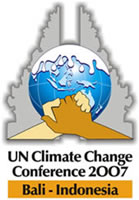Three days after purchase, the battery hatch on my new camera broke during the course of ordinary use. I opened it to change the batteries and, when I tried to close it again, found that a little plastic bit was bent outwards. Afterwards, it would not close.
Future Shop refused to exchange it for a working one because they said the breakage was my fault. It was a reminder of just how poor their customer service is. The agent doing the return insisted that it had been dropped, even though it looked absolutely perfect aside from the bit that was bent.
The camera is being sent back to Canon for repair under the manufacturer’s warranty. Hopefully, they will simply repair or replace the hinge assembly. Irksomely, it can only be sent back to the store that did the original sale. When it comes back in a few weeks, it will therefore need to be mailed out to me in Ottawa.
[Update: 16 January 2008] More than two weeks after turning in my camera for repair, it remains ‘unprocessed.’ Perhaps, they say, they will be able to tell me the cost of repair within a week.
[Update: 23 January 2007] Apparently, the A570 has been repaired. My mother has kindly offered to pick it up and mail it to me tomorrow.
[Update: 31 January 2007] Oh, trumph and celebration! My camera has been returned and seems to be functioning properly. No more photos of the day from weeks past!




